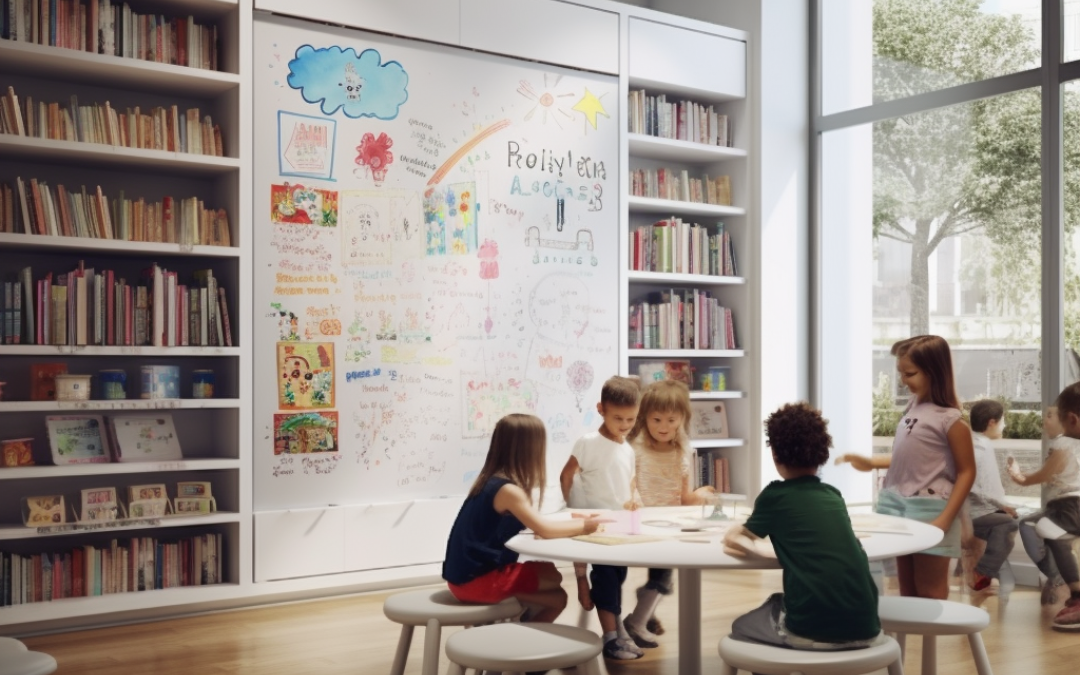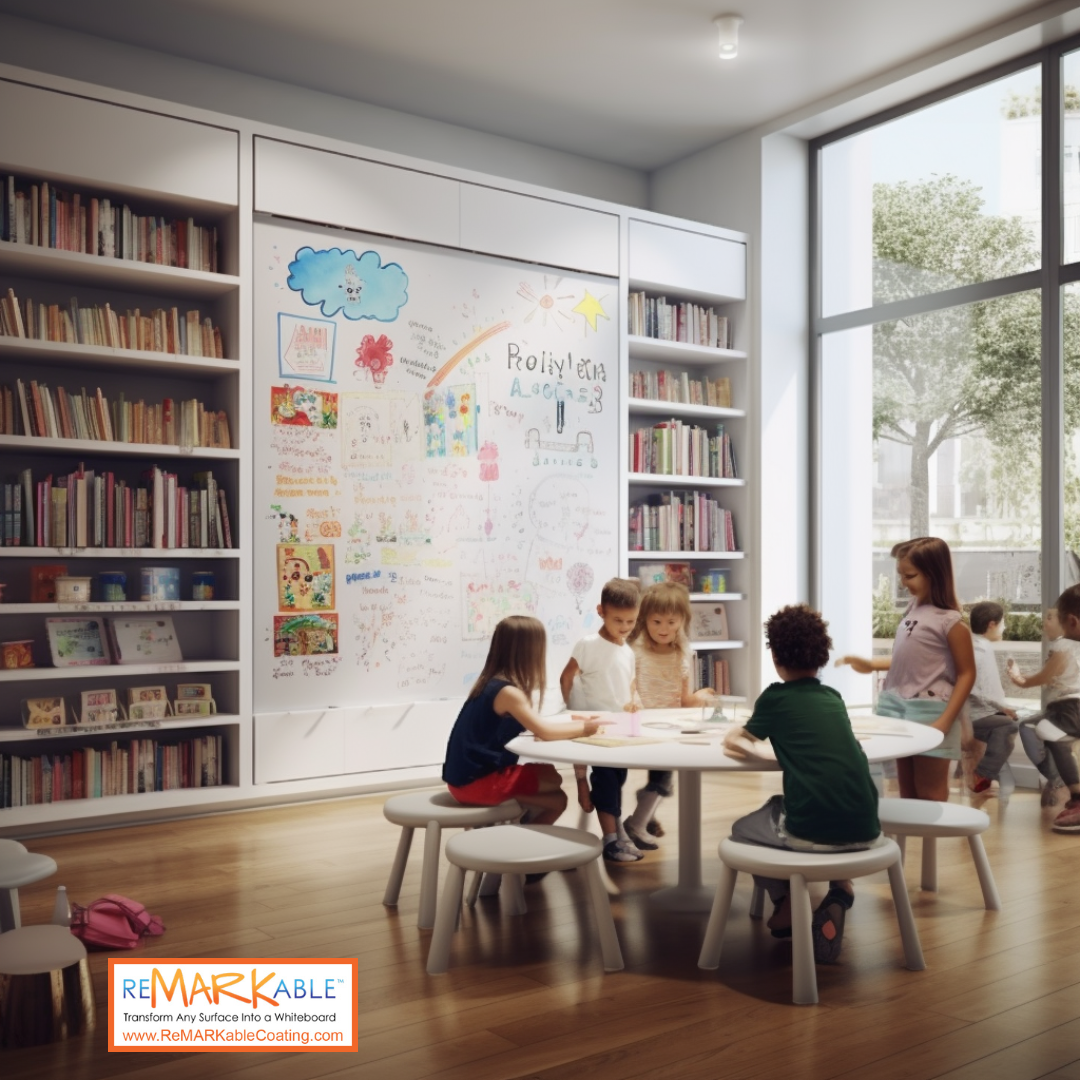Interactive Learning Spaces: Dry Erase Wall in Home Schooling Environments
Introduction: Unlocking Educational Creativity with Dry Erase Wall
In the dynamic realm of home education, where adaptability and innovation take center stage, a revolutionary tool is emerging as the cornerstone of transformative learning: the dry erase wall. As parents and educators navigate the complex terrain of personalized learning, the dry erase painted wall proves invaluable, challenging traditional norms and redefining the very essence of education. This article embarks on an enlightening journey through the myriad ways these writable surfaces elevate the learning experience, providing profound insights, practical tips, and real-world examples to empower parents and educators in cultivating an engaging and interactive home schooling environment.
In this era of educational exploration, where every facet of learning undergoes a metamorphosis, incorporating dry erase wall signifies a departure from conventional teaching methods. By introducing this interactive tool into the homeschooling landscape, parents and educators embrace not just a surface but an innovative gateway to a dynamic and participatory educational experience. Join us as we delve into the transformative power of these walls and uncover how its integration transcends the boundaries of traditional education, opening up new horizons for both students and facilitators alike.
1. The Canvas of Possibilities: Redefining Teaching Spaces
The concept of homeschooling is no longer confined to traditional classroom setups. Parents can envision and reimagine any room within their homes as an interactive canvas, where the dry erase wall becomes a dynamic tool for transforming lessons into engaging experiences. From illustrating complex math problems to charting historical timelines, the dry erase painted wall transforms the learning space into an immersive educational environment.
Picture a geography lesson where continents come to life with vibrant markers or a science experiment unfolding before the student’s eyes. The dry erase wall becomes a stage for interactive learning, breaking away from the monotony of textbooks and immersing students in a visual and participatory educational experience.
2. Engagement Beyond Books: Interactive Activities for Active Learning
Recognizing that static learning materials can sometimes fall short of capturing a student’s attention, the dry erase wall is a catalyst for active learning. Educators can design activities that encourage students to engage with the material physically. Whether solving math problems collaboratively or tracing historical journeys, the tactile nature of the dry erase surface transforms abstract concepts into tangible, memorable experiences.
Envision a language lesson where vocabulary words come to life as students physically write and visualize their meanings. The dry erase wall’s interactive nature reinforces learning and accommodates diverse learning styles, making education accessible and engaging for every student.
3. Designing a Purposeful Learning Environment: Tips for Home Schooling Spaces
Beyond content, effective homeschooling spaces are about creating an environment that nurtures creativity and curiosity. Incorporating a dry erase wall requires thoughtful design to maximize its educational impact. Consider strategic placement in areas with good visibility and accessibility. Ensure sufficient lighting to enhance visibility, and use contrasting markers for clarity.
A well-designed home schooling space fosters concentration and creativity. Consider creating designated zones for different subjects, allowing students to transition seamlessly between lessons. Parents and educators can amplify the benefits of interactive learning by curating an environment that supports the use of the dry erase wall.
4. Beyond Academic Lessons: The Creative Potential of Dry Erase Walls
While academic subjects often take center stage, the creative potential of dry erase walls extends far beyond conventional lessons. Imagine a music lesson where notes and scales are visually represented or an art class where budding artists sketch and share ideas freely. The dry erase painted wall becomes a platform for exploring and expressing creativity across diverse disciplines.
Encourage students to unleash their imagination during designated creative sessions. From brainstorming ideas for a writing project to visually mapping out a science experiment, the dry erase surface becomes a blank canvas for creative exploration, fostering a holistic approach to education.
5. Practical Tips for Integrating Dry Erase Walls into the Curriculum
The successful integration of dry erase walls into the homeschooling curriculum requires deliberate planning. Begin by aligning the use of the wall with specific learning objectives. Tailor activities to the age and grade level of the students, ensuring that the content is both challenging and engaging.
Consider incorporating the wall as part of a weekly or monthly schedule, introducing variety into the learning routine. Emphasize the importance of care and responsibility, teaching students to maintain the wall for long-lasting use. By strategically integrating the dry erase painted wall, parents and educators can create a curriculum that seamlessly weaves interactive learning into every subject.
6. Examples: How Dry Erase Walls Enhance Home Schooling
To understand the impact of dry erase walls on homeschooling, let’s explore real-world examples of their successful implementation. From personalized lesson plans to collaborative projects, these examples showcase the adaptability and effectiveness of the dry erase wall in various home schooling environments.
Meet the Smith family, who transformed their living room into a multi-functional learning space using dry erase painted walls for academic lessons and creative projects. Their experience highlights the versatility of these surfaces, catering to the diverse needs of students across different grades and subjects.
7. Maintaining the Momentum: Best Practices for Dry Erase Wall Care
Like any valuable tool, dry erase walls require proper care to ensure longevity. Educators and parents should educate students on best practices for maintaining the wall’s condition. Emphasize the use of quality markers, regular cleaning routines, and gentle erasing techniques to preserve the integrity of the surface.
Consider implementing a routine inspection schedule to catch any potential issues early. By instilling a sense of responsibility in students, parents and educators can ensure that the wall remains a reliable and effective tool for interactive learning.
8. Unlocking Imagination: Fostering Creative Exploration
Creativity lies at the heart of effective education. The dry erase wall serves as a conduit for unlocking imagination and fostering creative exploration. This section delves into specific strategies for encouraging students to think outside the box, from collaborative storytelling to visually mapping out innovative projects.
Envision a scenario where students collaboratively create a fictional world, drawing landscapes, characters, and plot twists on the expansive canvas of the dry erase oainted wall. This subheading explores how educators can leverage the creative potential of dry erase walls to inspire a passion for learning and innovative thinking.
9. Adapting to Diverse Learning Styles: Personalized Approaches with Dry Erase Walls
Recognizing the diversity in learning styles among students, let’s explore how dry erase walls allow for personalized approaches. From kinesthetic learners who benefit from hands-on activities to visual learners who thrive on seeing concepts come to life, such wall becomes a versatile tool in catering to individual preferences.
Consider strategies such as personalized study guides, interactive quizzes, and collaborative group activities that address the unique needs of each student. Parents and educators can create a genuinely inclusive homeschooling environment by adapting teaching methods to diverse learning styles.
Conclusion: Transformative Learning with Dry Erase Walls at Home
In conclusion, integrating dry erase wall into home schooling environments marks a paradigm shift in how we approach education. From creating dynamic teaching spaces to fostering creativity and active learning, these writable surfaces empower parents and educators to redefine the homeschooling experience. The journey towards interactive and engaging home education becomes a reality by following practical tips, incorporating real-world examples, and emphasizing proper care.
As we navigate the evolving landscape of education, the dry erase painted wall stands as a symbol of innovation and adaptability. It transcends the limitations of traditional learning materials, opening doors to a world where every lesson becomes an immersive, collaborative, and memorable experience. Welcome to the future of homeschooling, where the walls aren’t just boundaries but gateways to a transformative educational journey.



Recent Comments